Cooking with Chilli
Cooking with Various forms of Chillis
Freezing Chillis
All types of chillis can be frozen and if you usually de-stem and split them open to remove the seeds and pith for use in cooking, then do it now so they are pr prepared for use. I would still leave them whole at this stage as it is easier to thinly slice semi frozen chillis when they are de-thawing. Wrap them well as it stops your chillis getting freezer burn, and they shouild last up to a year or by next years harvest. You can now use them as required, either thaw them out or simply throw them in while still frozen.
 Roasting Chillis
Roasting Chillis
Large Chillis like Poblano's benefit by being roasted over a wood fire or even charcoal BBQ's, but they can also be done by placing over a flame of a gas cooker or a under a very hot grill in the home, this will rid them of their tough skins and give them a little smokiness. The smaller the chilli the less need there is to roast them, just a quick grilling will suffice but no need to peel them. Once roasted place them in a bowl and cover with a tea towel until the skins are easily rubbed off, this flesh can now be stored in the refrigerator, or they can be frozen with skins still on and then removed once thawed.
Pickling Chillis
I haven't had too much success with pickling chillis, as they tend to end up too soft or too slimey, while loosing their vibrant colours. but I shall persever and adding a few herbs and spices is a good idea for any pickle recipe and again you can be flexible with the ingredients. Use whole seeds and dry roast them for the best result. Use any kind of glass jars, but the one thing you should take care over in this recipe is sterilising the jars. It's not difficult, wash the jars out with hot soapy water, rinse clean, and dry thoroughly in a medium oven, bootle up and seal while still quite warm. There are plenty of recipes about on the web, with some on our forum boards so I'll leave that bit to you.
Dried Chillis
In Mexican cooking, whole dried chillies are usually roasted and then rehydrated before being made into a paste. De-stem and de-seed the pods and place in a heavy dry frying pan and dry roast for 3 - 4 minutes keep the moving about in the pan and watch you don’t burn them as they turn bitter.
The dried chillis should be placed in enough hot water (not boiling) so they can easily move and float about, then give them an occasion turn to ensure coverage and they plump up evenly all over, a weight will help by keeping them underwater, to ensure coverage. Do not leave them too long to soak as they will start to leech out the flavours into the water, probably 10-15 minutes in warm water should suffice, as long as they are now pliable it should do, discard the water as it will probably be bitter, but it can be tasted if you really want to use it in a sauce but check flavour before using.
Dried chillies should be stored in an airtight container and in a dry, cool and dark place. Although you can keep them for years, it is best to use them within six months.
If you want to make your own flakes or powders roasting the dried chillis improves the flavour and renders the chillies much easier to crush in a pestle or chop in a food processor. Let them cool after roasting as they will then be easier to crush as they will be more brittle. These flakes and powders will now make the tastiest of dry rubs for BBQ's.
Use a small coffee grinder that you can set aside for chilli and spice grinding. Due not grind continuously for too long as this will heat and burn the chillis but blitz in short bursts and then let the dust to settle for a minute before taking the lid off, as some of the hotter chilli types will let a lethal dust cloud up from the grinder.

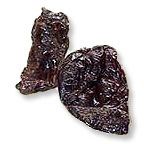
Aji:About 4 to 5 inches long, medium fleshed, with a fruity flavour. This chile is used to make a yellow mole sauce and is good in salsas.
Anchos: About 3 to 4 inches long, these are dried poblano chillis, a dark reddish brown chilli with a wrinkled surface, fairly mild, thickish flesh with a sweet earthy flavour of liquorice, tobacco, coffee and raisins. Used in mole, enchilada sauces, tamales and stews. The traditional mole has Ancho, Mulato and Pasilla Chillis.
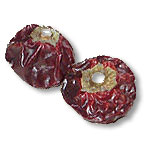

Cascabel: Meaning rattle in Spanish due to the rattling sound when shaken, about 1 to 2 inches, dark reddish brown, smooth and round in shape, this chilli is medium hot used in sauces, salsas soups and stews.
Chipotles: There are two main types, a black-red one and a light brown one. The sweeter black-red ones seem to be the most common ones found and these are the ones which go into the cans of the spicey tomato adobo sauce. Either type can be used in cooking, but the black-red variety seems to give a sweeter, rich and lingering flavour, while the light brown type which resembles a piece of light suede has a more earthy-grassy flavour.

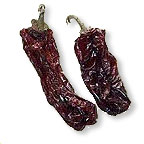
Chilhaucle Negro: About 2 to 3 inches long, this dark mahogany chilli has an intense fruit flavour and is shaped like a miniature bell pepper. Used in soups and stews and in black mole sauces with its dark purple colour.
Choricero: About 4 inches long, this is an extremely sweet and mild Spanish chilli. A very distinctive and full flavour, slightly smokey and eaed in sauces, soups and stews and is large enough to stuff.
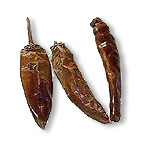

Costeño Amarillo: Anything from 1 to 3 inches long, this shiny amber chilli has a thin flesh and has a light lemony green flavour. Fairlt good heat mostly used in yellow moles, soups stews and salsas.
Guajillo: About 12cm long, shiny, deep orange-red with brown tones, elongated, tapering to a point and sometimes slightly curved. Thin fleshed; has a green tea and stemmy flavor with berry tones. A little piney and tannic, with a sweet heat. Commonly used in salsas, chile sauces, soups, and stews.
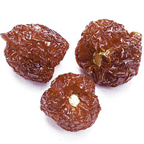
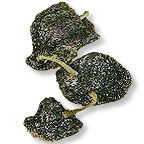
Habanero: Before the Naga's came along these were the hottest chillis you could get while they won't scorch you quite as much as ghost pepper, they do deliver a lot of heat, and a good fruity flavour, good in Carribean recipes.
Mulato: About 7cm long, deep dark brown dried chilli of medium flesh similar to anchos, fairly mild with a smokey liquorice taste, more smokier than the Ancho. Traditionally used in sauces, chile pastes, enchiladas, and chile con carne to add a distinctive rich mellow flavour. The traditional mole has Ancho, Mulato and Pasilla Chills.
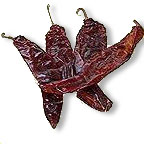
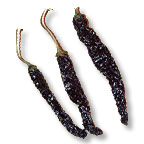
Nu Mex Red: About 12cm long, also known as the chilli colorado, dried version of the red variety although all varieties of Nu Mex can be found dried, thin fleshed with an earthy flavour. The red dried ones are sweet and fruity. Used in red sauces and stews, good roasted or stuffed when fresh, also used decoratively in the making of ristras.
Pasilla: About 12cm long thin fleshed chilli, dark raisin brown and wrinkled with herbaceous tones and a hint of liquorice. Also sold as chilli negro. Used with Mulato and Ancho to make the traditional mole sauce. Good in all sorts of sauces.
Smoke Your Own Chillis
Start early to allow 6 -7 hours of smoking, 500g ripe red jalapeño or fresno chillis, 10 pounds charcoal briquettes, Wood chips your choice (such as mesquite chunks cut into smaller pieces).
Cover wood chips in water and leave to soak. Mound about one half the briquettes into the charcoal pan and light. Wash the chillis and cut a slit lengthwise in each one from just below the shoulder to about a half inch from the tip. Place the chillis in a single layer (slit side up) on a tray or rack that will fit in the smoker and won't let the chiles fall through. When the briquettes are covered with grey ash, spread out into an even layer (if using a BBQ, spread the briquettes to the side leaving a bare spot in the center). Place some of the soaked smoke chips on the briquettes. Fill the water pan with 2 to 3 inches of water (if using a BBQ, use an aluminium foil pan that will fit in the bare spot in the center of the BBQ) and put in place over (or in the center of) the briquettes. Put smoker or BBQ rack in place, place the container of chiles on the rack over the pan of water, and cover the smoker or BBQ.
The idea is to keep a low-heat, smouldering, smoky fire for several hours. Add briquettes, smoke chips, and sprigs of fresh rosemary as needed to keep generating heat and smoke. After 6 or 7 hours, the chillis have probably absorbed as much smoke as they're going to. They should be a dark, brick-red colour and somewhat wrinkled but, they won't be totally dehydrated to a point where they would keep at room temperature. Remove them from the smoker and finish drying them in a warm oven or a dehydrator if needed.
